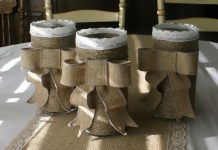 The art that you hang in your home is inevitably an expression of your self, your tastes and your personality.
The art that you hang in your home is inevitably an expression of your self, your tastes and your personality.
As such it is a reflection on you, and ought to be displayed to its best advantage.
Here are some general guidelines to help you get started:
It doesn’t have to match! Color coordination is a good thing, but this is not strictly true when it comes to art. If you have red sofas that do not mean you need to have paintings with red hues.
There is an old saying, “Good Art Won’t Match the Sofa”; this is truer than you think! Sometimes contrast can work so much more beautifully than something that is color coordinated, which can actually end up a teeny bit bland.
Understand that your furnishings and your art work both reflect your sensibility and so in an abstract way, they are bound to form a harmonious whole.
Hang it at eyelevel: Here is the rule of thumb: your art work is best viewed at eyelevel and taking into account people’s average eyelevel the artwork should be hung in a way that the center of the art work is about 60 to 65 inches from the ground.
This is a general rule however, and it may not work if say you are placing your artwork over a book case that is itself about 5 feet in height.
You then need to place the art work a lot higher. You may want to place it lower if it is next to a seat so that a person can sit and view it.
Group the artwork to make a whole: You can have different size canvases, landscapes, still life painting or even pictures of the family, in short a series of frames that have a common theme, which you can position in a way that they form a harmonious whole.
A mixture of different sized squares and rectangles can be positioned in a square formation or a rectangular formation all along one wall to make a great visual impact that is a sum of its parts.
Pay attention to lighting: You may want to think of focus lighting to light up a piece of art work that you yourself particularly like, for your own aesthetic sense as well as that of your visitors.
Consider whether a particular piece of art will look better with a bright light on it or whether its subtleness is better brought out by indirect and understated lighting.










